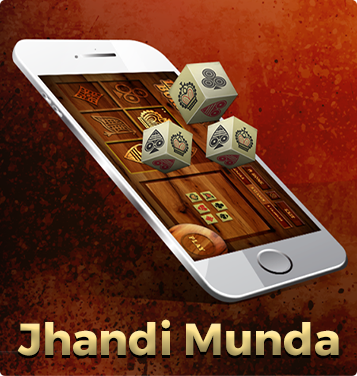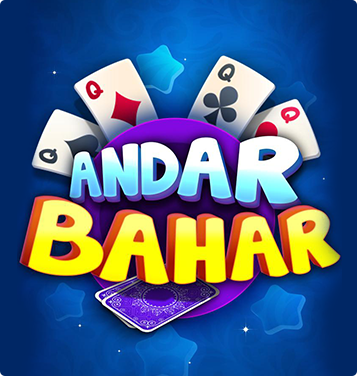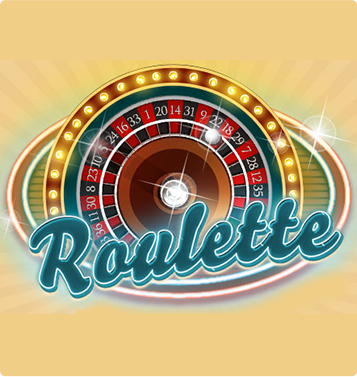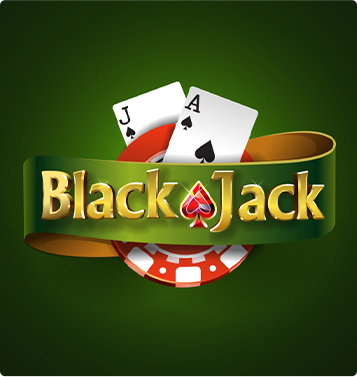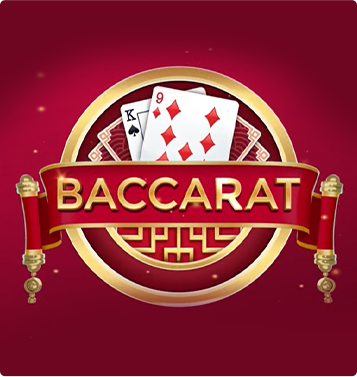What's on page
Blackjack game
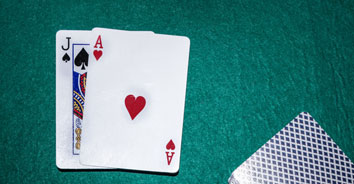
What does it mean to be a Blackjack pro? A Blackjack pro is one who ascends the level of Blackjack understanding any casual player can get within a few games. A pro player understands that to reach their goal of making it in the gambling profession, they have to put in time, practice, and patience. Moreover, being a pro in Blackjack is very different than being one in Poker, or any other card game for that matter.
While Poker pros enjoy an almost celebrity status, Blackjack pros have to slink in the shadows. While Poker pros are invited to tourneys, get book deals, and enjoy other benefits that come with recognition, Blackjack pros gain nothing and lose everything with notoriety. They simply have to keep their head down and dedicate themselves to their craft. If you see yourself in the shoes of a Blackjack pro, then, this ultimate guide for playing like a Blackjack pro is for you.
Jumping right into it, playing like a Blackjack pro, whether it’s in a brick-and-mortar casino or an online website, can be broken down into the following six steps.
- Understanding the basics of Blackjack
- Learning the standard gameplay
- Mastering the exceptions and variations
- Perfecting the basic strategy
Top 3 Blackjack Casinos
| 1 |  |  Read Review | ₹20,000 Live Casino Bonus |  |
| 2 |  |  Read Review | Welcome bonus up to ₹30,000 |  |
| 3 |  |  Read Review | Welcome bonus up to ₹1,000 |  |
Play Blacjack online for real money today!
Online Blackjack is undoubtedly one of the invigorating card games played by millions of gaming enthusiasts worldwide. Well-known for its thrill and skills, this card game is for players who enjoy skill and strategy application games. There are a plenty of online Blackjack variants that you can explore and discover and we, at Casino Bonus India bring to you an excellent platform by listing the top online casinos that offer the best Online Blackjacj games accompanied by gripping bonuses.
Do keep in mind that in order to excel in the game, it is important that you master the Blackajck techniques and strategies that suit you. Learn the Blackjack strategies and only then get ready to play for real money. Rigorous practise and focus will bring a long way in the game.
| Did you know?
The main objective of playing Blackjack is to beat the dealer. If you are playing to reach 21 without a going over, it is a mistaken strategy. |
Online Blackjack is a fun-filling table game that requires mastering the techniques and strategies well before you play for real money. Also keep in mind to read the game rules thoroughly before you start playing. Good luck there!
Understanding the basics of Blackjack
Your objective while playing a game of Blackjack is to beat the dealer. Unlike card games like Poker, you’re not playing against other players. You’re going head to head with the dealer, who represents the house itself. Here are your winning and losing criteria in a Blackjack game.
You win if:
- You draw a hand value that’s higher than the dealer’s hand value.
- The dealer draws a hand value of over 21.
- you draw a hand value of 21 on your first two cards when the dealer does not.
You lose if:
- Your hand value crosses 21.
- The dealer’s hand is higher in value than yours at the end of the round.
If a table has more than one player, all of them are trying to beat the dealer, or “bring the house down” as popularly said in gambling culture. While a fellow player may try to convince you that Blackjack is a “team sport”, it’s very much not. This is because a player’s cards do not affect others’ in any way. It’s a commonly held misbelief that the play of other people at the table has a negative effect on the results for other players. The fact is that, in the long run, the decisions of other players at the table have no effect on the expected result for a basic player strategy. So the next time you get yelled at by your table mates for “ruining it for the table by hitting”, remind them of this fact.
Speaking of playing with other players, Blackjack is usually played on a semicircular table that seats multiple players. The semi-circular side has spots marked for the players while the dealer sits on the straight side behind a chip rack and a shoe. A chip rack is a container for safely storing and organizing chips while a shoe is a plastic, card-dispensing device. Though some single and double deck games exist, most Blackjack games use a 6-deck or an 8-deck shoe these days. Tables can have anywhere from 5 to 12 spots with the most common configuration being 7. The table is usually covered in green felt with Blackjack rules printed on top. So expect to see phrases like “Blackjack pays 3 to 2”, “Insurance pays 2 to 1”, and “Dealer must draw to 16 and stand on all 17s”.
Now, before you start learning the standard gameplay, you’ll need to understand the card values and hand options, so let’s take a quick glance over both of them.
Hand values
Blackjack is played with a standard 52-card deck. Hand values are calculated by adding up the individual card values. Suits don’t matter in this game.
Individual card values:
- Count cards 2 through 10 at their face values, i.e. a 3 counts as three, a 7 counts as seven.
- Count all the face cards (J, Q, K) as 10.
- Count the Ace as 1 or 11, depending on which value is more favorable to your hand.
Hand options
When the first two cards have been dealt during a game, you’ll have to evaluate your hand value using the card values listed above and make an appropriate move. Here are the most common five hand options you have:
- Hit – If you’d like to improve your hand total by adding more cards, you can select ‘Hit’. One at a time, you’ll receive more cards until either you go bust or choose to stand.
- Stand – If the two cards you’ve received are acceptable to you, you can select ‘Stand’.
- Split – If you’re dealt with two cards of equal value, you can put another wager and split the cards. You’ll then have two hands and the two cards will become the first cards of two new hands. Note that you can split a Jack and King because they have the same value in the context of this game, even if they aren’t actually a pair.
- Double Down – If you get an advantageous hand total but need only one more card, you can double your wager. You’ll then be dealt with only one more card.
- Surrender – If your initial hand is terrible, you can surrender to back out and have half your original bet back.
Learning the standard gameplay
Okay, so now that you’ve got a hold of the basics of Blackjack, it’s time to see these fundamentals in action. Let’s go step-by-step.
Step 1: Buying the chips
Most casinos don’t allow “cash plays” wagers anymore, so you’ll have to exchange your money for chips at the table. The dealer will take care of this for you; all you have to do is walk up to the table you want to play on and place your money on the felt table. Then, the dealer will lay out your money on the table for the cameras to see and the pit boss with come over and verify the amount.
Note: Do not hand your money directly to the dealer. They won’t take it. For security reasons, dealers can neither take anything from a player’s hand, nor can they give anything back.
After the dealer has counted out chip denominations for the amount you bought in for and pushed them towards you, you’re free to handle the chips and start placing your wagers. The dealer will once again lay out your chips on the felt to show it to the camera.
This process may change quite a bit in online Blackjack games. Since you’ll be interacting using a betting interface, you can use buttons labeled “+”, “-”, and “Bet” to perform the necessary functions. You’ll also have to convert your money into chips by making a deposit to your casino wallet.
Step 2: Placing the wager
With your freshly converted chips, you can place your first bet. The round begins only after you do so. You’ll need to place your bet in a circle marked on the felt (it can also be a square or simply the casino logo). Your bet size is bound by the table limits, which are printed at the far right or left side of the table. These limits can heavily vary between countries, regions, casinos, and even on the casino floor.
The limits also vary when you go online. A single casino website can offer games from multiple game providers. The maximum and minimum betting limits often vary between game providers, so make sure to check the table limits while selecting the Blackjack title. Either way, you can back out of a Blackjack lobby instantly.
Step 3: Dealing the cards
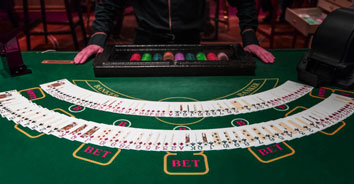
After the players have placed their bets, the dealer starts dealing the cards. Cards are dealt clockwise, one card, face up to each player at the table followed by one face-down card to the dealer. Next, another round of cards are dealt, but this time all the cards are placed face up, including the dealer’s. At the dealing process, every player will have two cards in front of them facing up while the dealer will also have two cards, one face up, another face down. While the same process is followed in live dealer games, online games carry out the dealing using a software.
Step 4: Playing the hand
With the cards on the table, each player has to play their hand, starting from the player left of the dealer (also called “first base”). Observe your two cards on the table and determine your hand value using the card values you’ve learned about. Your hand value will lie somewhere between 4 and 21. Depending on that value, you’ll have to play your hand.
But wait! If you’ve received an Ace and a ten-value card, you’ve hit Blackjack. If the dealer also hasn’t hit Blackjack with you, then you’ll immediately receive your winnings. The dealer will push 1.5x your wager worth of chips towards you. If the dealer does hit Blackjack by an astronomically low chance, then, neither will you win anything nor will you lose your wager, but your round is still finished.
When both you and the dealer don’t hit Blackjack, the game continues. The player will point to each player in succession and wait for them to play their hands. When it’s your turn, you’ll have to indicate your choice through a hand signal. Dues to security reasons, the dealer will not accept your verbal instructions, so it’s essential that you learn the hand signals for each of the five hand options.
- Hit – Tap the felt with your finger or wave your hand towards your body. If you’re playing handheld games, scrape the cards against the table.
- Stand – Wave your hand horizontally or simply put an open palm over the felt. In handheld games, slide the cards under the chips.
- Split – Place a second wager equal to your first next to the original bet outside the betting box. Then point with two fingers in a V-formation.
- Double Down – Place a second wager equal to your first next to the original one outside the betting box and point with one finger. The dealer will give you a single card turned sideways, indicating that you may not receive any more cards.
- Surrender – Draw an imaginary line on the felt just behind your bet. To avoid confusion, say the word “Surrender” out loud as well.
If you’re planning on playing only online Blackjack games, then, you don’t need to learn these hand signals. Playing your hand in that case will be as simple as clicking on the buttons labeled “Hit”, “Stand”, “Split”, “Double Down”, and “Surrender”.
Step 5: The dealer’s turn
By this time, you have reached one of these points in the game:
- You are standing – You got a good initial hand and decided to stand. You have been on your cards ever since (not literally).
- You have improved your hand – Though you didn’t get the best hand initially, you took more cards by hitting, doubling down, or splitting and have achieved a hand total of 21 or less and haven’t gone bust.
- You are out of play – You hit your hand one or more times and have “busted”. Or you simply surrendered. Regardless, you’re out of play.
Needless to say, whatever happens from here on out, it’ll only affect you if you haven’t gone out of play. The dealer will start their turn by flipping the “hole” card (the face-down card) and add the two card values to get their hand value. They will then follow a set of steps fixed by the casino based on that hand value. They do not have the option to double down, split, or surrender, nor do they have any choice on how to play their hand.
If the hand value is 16 or lower, they will take additional hit-cards; if it’s 17 or higher, they will automatically stand. The only exception is when they get a soft 17, i.e. an Ace and a six. Some casinos treat it the same as a hard 17, but some count it as 7 (due to the flexible value of an Ace) and allow their dealers to hit, giving them a better chance of beating the player. You can counter this by playing at tables where the “dealer stands on soft 17”. Online Blackjack dealers follow the same procedures and rules.
Step 6: Handing payouts
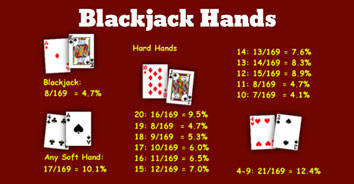
After both you and the dealer are done playing your respective hands, the game will have reached one the following two points:
The dealer has gone bust – When they do, each player who is still in play will be paid even money, i.e. 1 times the wager.
The dealer has made a hand – If the dealer has made a hand while you’ve managed to stay in play, the payout depends on who has the higher hand value. If you have the higher hand value, the dealer pays you one time your wager. If you and the dealer have the higher hand, they sweep your bet. If you have the same hand value as the dealer, it’s considered a “push” and you keep your money but are not paid on your wager.
For example, if you bet ₹50, you’ll get ₹50 if you win, you’ll lose ₹50 if you lose, and your ₹50 will remain in the betting circle if a “push” ensues. You can leave it there as your next bet, add to it, or remove it and not play.
Online Blackjack follows the same payout rules, but the payouts are automatically made by the software directly into the player’s casino account. This automation speeds up the process and removes human error.
After payouts are done, the round if considered finished. The cards are swept up and another one is started. That’s all there is to it.
Mastering the exceptions and variations
Blackjack is a centuries-old game, but it hasn’t stayed the same since its conception. Over time, some casinos have found ways to make it profitable for themselves while others have shaved off their profits for the players’ entertainment. Either way, numerous exceptions and variations can be seen in both brick-and-mortar and online casinos today. Playing like a pro means taking advantage of the best exceptions and variations while avoiding the harmful ones.
Blackjack Exceptions
Insurance
When the dealer’s up-card is an Ace, they will offer an Insurance before anybody plays their hand. If you accept, you’re essentially betting on whether the dealer will get a Blackjack. If you win, you’ll get paid 2 to 1. Once the interested players have placed their bets, the dealer checks their hole card using a special viewing window in the table. If the dealer does not have 10 for their hole card, they will take all the insurance wagers and continue the game. If they have a ten, it means the dealer has a Blackjack and will take everyone’s original wager. Insurance buyers will be paid 2 to 1.
In case the player has a Blackjack, the dealer will offer Even Money instead of insurance. The conditions regarding this are as follows:
- If you take even money, your Blackjack will not get paid 3 to 2. It will simply get one times the original wager, i.e. even money, regardless of whether or not the dealer has a Blackjack.
- If you don’t accept even money, and the dealer doesn’t have a Blackjack, you’ll be paid 3 to 2, the normal Blackjack payout.
- If you don’t accept even money but the dealer does get a Blackjack, your wager will push and your Blackjack will not get paid.
All this is to say — taking insurance is a terrible choice. It may look helpful, but it’s massively undercutting your RTP. Only card counters should opt for insurance bets depending on the situation. For all others, it’s a strict no-no.
Side bets
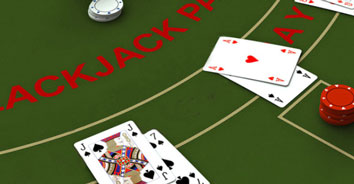
Insurance is the most popular and widely accepted side bet in Blackjack. But casinos these days offer a myriad of other side bets: betting on if your cards will match the dealer’s, if you’ll get a pair as your first two cards, whether the dealer will go bust, if your hand will make a Poker hand with the dealer’s up-card, and many others. While the RTP of each of every one of these side bet Blackjack games can’t be listed here, it’s strongly advised you stay away from all of them. More often than not, they’re offered by casinos looking to get a bigger advantage over you.
Dead hand
If all the players at the table go bust before the dealer plays their hand, there’s no reason to play the dealer’s hand and waste cards as they have already beaten the players. This situation is called a “dead hand”, ensuing which the dealer flips over the hole card to show it to the cameras and sweeps the cards up and puts them in the discard tray.
Blackjack Variations
Re-splitting aces
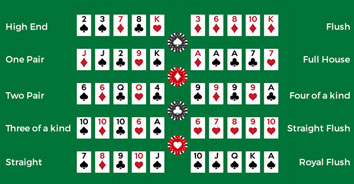
In some casinos, you can re-split your aces after you’ve already split them. This means if you can split a pair of aces and receive another ace, you can split to a 3rd hand up to a total of 4 hands. As the ace is a powerful card for the player, this is an advantageous variation for the player.
6 to 5 Blackjack
The standard Blackjack payout of 3 to 2 is the most profitable for the player. But many casinos also offer payouts of 6 to 5. This payout ratio increases the house edge and decreases the player’s profitability. It is highly disadvantageous for the player. Read the payout rules before sitting down at a table.
Multi-deck
As a rule of thumb, the more the decks used in a Blackjack game, the higher its house edge. However, a higher-deck Blackjack game can have a smaller house edge than a fewer-deck game if other variations and exceptions in play are advantageous to the player. Check all rules before joining a Blackjack game.
Doubling after splitting
As the name suggests, this variant lets you double down on a hand that you’ve just split. Most casinos don’t offer this, but it’s beneficial to the player when provided.
Doubling for less
Casinos that allow “doubling for less” let you put a smaller wager than your original wager while doubling down. However, RTP calculations suggest that there’s never a good time to double for less. Avoid doubling for less and always double for the full amount.
Perfecting the basic strategy
If you haven’t heard it already, Blackjack is a game of skill. As a casino game, it does have a “chance” factor that’s favorable to the casino. But a pro Blackjack player can wrestle that advantage away from the casino and use it to their own advantage. And the weapon they can use to do this is the basic strategy.
What’s the Blackjack basic strategy? It’s essentially a research carried out by mathematicians over decades to prove that there is indeed an optimal way to play every hand dealt to you in Blackjack. It gives you a simple process for you to work with, a set of questions you can ask yourselves before making any decisions in Blackjack. Here is what it looks like:
-
Can I/should I surrender?
When playing at a casino that allows “late surrender” or when you’ve already taken a hit card, you should ask yourself “can I/should I surrender?” If the answer is no, then, you move on to the next question.
-
Can I/should I split?
If your first two cards are a pair or if you have two ten-valued cards, then ask yourself “can I/should I split?” If the answer is no, then move on to the next question.
-
Can I/should I double?
If you’ve reached this question, you’re probably going to win. But some casinos put up conditions to limit doubling down. Which is why you should ask yourself “can I/should I double?” If the answer is no, then move on to the next question.
-
Should I hit or should I stand?
The final question is whether or not you should take another card. If you’ve come through the above options, you’ll likely have to hit or stand.
The entire process can be boiled down into 14 simple, easy-to-remember points.
- Surrender 16 against dealer’s 9 through Ace and 15 surrenders against dealer’s 10, otherwise don’t surrender
- Always split aces and 8s. Never split tens
- Split 9s against dealer’s 2 through 9, except for 7, otherwise stand
- Split 7s, 3s, and 2s against dealer’s 2 through 7, otherwise hit
- Split 6s against dealer’s 2 through 6, otherwise hit
- Split 5s against dealer’s 2 through 9, otherwise hit
- Soft 20 always stands
- Soft 19 doubles against dealer’s 6, otherwise stand
- Soft 18 doubles against dealer’s 2 through 6, hits against 9 through Ace, otherwise, stand
- Soft 17 doubles against dealer’s 3 through 6, otherwise hit. Similarly, soft 16 and 15 double against dealer’s 4 through 6 and soft 14 and 13 doubles against dealer’s 5 through 6
- Hard 17 and up always stand
- Hard 16, 15, 14, and 13 stand against dealer’s 2 through 6, otherwise hit. Similarly hard stands against dealer’s 4 through 6
- Hard 11 always doubles, and hard 8 always hits
- Hard 10 doubles against dealer’s 2 through 9, otherwise hit. Similarly, hard 9 doubles against dealer’s 3 through 6, otherwise hit
Conclusion
And this is it! That’s everything you need to know to play Blackjack like a pro. Now all you need is some practice. Happy gambling there!
Blackjack is played with a 52-card deck. Hand values are calculated by adding up the individual card values.
There are a number of strategies that can be applied in order to optimize your winnings. However, the game largely depends on the cards dealt and a bit of luck as well. The results in Blackjack are also directly related to how you play. You can reduce the overall effect of luck by making the correct decisions in every hand.
Well, we, at Casino Bonus India, bring to you the list of all the premier online casino sites that offer spectacular online Blackjack games developed by top-notch gaming providers. So watch out!
Of course! You can explore your favourite Live Blackjack variants anywhere, anytime accompanied by professional live dealers and an exclusive live chat feature on your fingertips.
Definitely! Online Blackjack can be played for real money at all online casinos and they offer a great chance to win real money from the comforts of your home.
